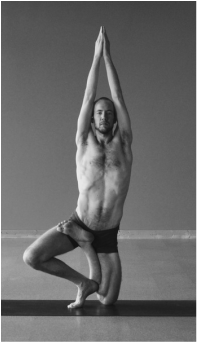|
Much yoga practice begins with mindful breathing; the relationship of breath and movement is an important one. Mindful breathing during Postures/Asanas (and life in general) is the first step in our Energy Control (Pranayama) practice.
There are four ways that we can relate our Postures and our Breath: we can 1) move the body and the breath, 2) hold the body still while moving the breath, 3) hold the body still while holding the breath, and 4) move the body while holding the breath. Each has its own benefits. 1) Movement the Body and the Breath is the most commonly known "yoga" practice in the west. It is called Vinyasa (especially in the Krishnamacharya lineage) - each movement of the body is linked with a complimentary inhale or exhale. This category of Posture practice begins the process of breath awareness, links the mind to the body, begins to purify the energy channels of the body and therefore generates tremendous energy and strength. 2) Holding the Body Still While Moving the Breath is powerful for the energy body and mind. It creates a "lock" with the entire body, shifting circulation and endocrine flow as well as strengthening the nervous system. When holding the body still while moving the breath, the body's energy circulates strongly. This category of Posture practice builds great concentration, focus and quiets the mind. 3) Holding the Body Still While Holding the Breath is often called a "lock" or "bandha." It creates vivid stillness in the mind and connects the energy of the body to the energy of the universe. This practice is used to purify the body on ever more subtle levels and to draw focus to the motion of the mind so it may be stilled. After we still the body and breath, stillness or Concentration (Dharana) of the mind is the next step on the path of Yoga. 4) Holding the Breath While Moving the Body takes great awareness and control of the body, energy and mind. It is the most advanced of these four practices. Once we can hold the Breath in stillness along with the Body (as in #3), we may decide to deepen our energetic control by moving the body without letting the breath or mind move. This practice creates powerful force in the physical and energetic bodies that can push up against a stilled mind and create energy disturbances if the yogi is not careful. If the mind can remain still and clear, the yogi deepens his or her connection with the divine.
0 Comments
Leave a Reply. |
This journal honors my ongoing experience with the practice, study and teaching of yoga.
My FavoritesPopular Posts1) Sridaiva Yoga: Good Intention But Imbalanced
2) Understanding Chair Posture 2) Why I Don't Use Sanskrit or Say Namaste 3) The Meaningless Drudgery of Physical Yoga 5) Beyond Bikram: Why This Is a Great Time For Ghosh Yoga Categories
All
Archives
November 2017
|


 RSS Feed
RSS Feed